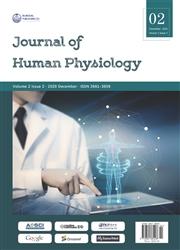Neonatal Size and Birth Canal Dimensions
引用次数: 0
Abstract
The limitation of the fetal growth process during pregnancy is supposed to be an adaptative response to a physical or a physiological constraint: the pelvic size or the maternal resources and metabolism. In this study 131 mother-infant dyads were recruited. We investigate correlation between maternal traits (height, BMI) pelvic variables (conjugate diameter, inter-spinous diameter, sub-pubic angle) and neonatal traits (gestational age, birthweight, head, suboccipito-brematic and abdominal girth). We found that the three neonatal variables are significantly inter-correlated. Among maternal traits, height is highly correlated with conjugate and inter-spinous diameters. Subpubic angle is correlated with inter-spinous diameter. Among neonatal and pelvimetry correlations, conjugate diameter is highly correlated with suboccipito-bregmatic girth. The pelvic size seems to be the primary constraint to the fetal growth process. This adjustement of fetus size to the birth canal dimensions limits the risk of dystocia. But the way this adjustement occurs at the end of pregnancy is unclear. We assume that the uterus expansion limitation may be an intermediate mechanism explaining the high correlation between pelvic and neonatal traits.新生儿尺寸和产道尺寸
怀孕期间胎儿生长过程的限制被认为是对生理或生理限制的适应性反应:骨盆大小或母体资源和代谢。这项研究招募了131对母子。我们研究了母体特征(身高、BMI)、骨盆变量(共轭直径、棘间直径、耻骨下角)和新生儿特征(胎龄、出生体重、头部、枕下骨和腹围)之间的相关性。我们发现三个新生儿变量显著相互关联。在母系性状中,身高与共轭直径和棘间直径高度相关。耻骨下角与棘间直径相关。在新生儿和盆腔测量的相关性中,共轭直径与枕下周长高度相关。骨盆大小似乎是胎儿生长过程的主要制约因素。这种调整胎儿尺寸与产道尺寸的方法限制了难产的风险。但这种调整在怀孕末期发生的方式尚不清楚。我们假设子宫扩张限制可能是解释骨盆和新生儿特征高度相关的中间机制。
本文章由计算机程序翻译,如有差异,请以英文原文为准。
求助全文
约1分钟内获得全文
求助全文

 求助内容:
求助内容: 应助结果提醒方式:
应助结果提醒方式:


